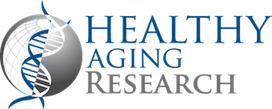
Healthy Aging Research
Open Access
ISSN: 2261-7434

ISSN: 2261-7434
Louise Brinth, Tabassam Latif, Kirsten Pors, Andreas Kjær, Jesper Mehlsen
Background: Falls and syncope in the elderly may be caused by hypersensitivity in the high-pressure baroreflex control - carotid sinus syndrome (CSS). The pathophysiological process causing CSS remains poorly understood.
Methods: We studied the hemodynamic response to carotid sinus massage (CSM) and compared this to other measurements of autonomic cardiovascular control in patients suspected of syncope-related falls. One hundred patients (≥80 years-old) referred to our syncope unit due to recurrent falls or possible syncope participated. CSM was performed in the supine and head-up tilted (HUT) positions. A hypersensitive response was defined by current guidelines.
Results: In the supine position, heart rate (HR) and systolic blood pressure (SBP) decreased during CSM on the right side by 17.0 +/- 15.2 min-1 and 32.5 +/- 25.5 mmHg, and on the left side by 12.8 +/- 14.3 min-1 and 22.7 +/- 20.7 mmHg, respectively. Changes in SBP were greater in the head-up tilted position (right side; p=0.029, left side; p=0.007). Hypersensitive responses were elicited in 45 patients. We found orthostatic hypotension (OH) (r=-0.275, p=0.015), not CSS, to be inversely correlated to low frequency HR variability during HUT.
Conclusions: The hemodynamic response to CSM has a well-defined pattern and differs both with respect to the stimulus site and patient position. We suggest that CSS is not a distinct pathophysiological process or disease entity but rather an acquired cardiovascular instability due to age-related degeneration and following mismatch between different components of cardiovascular regulation.